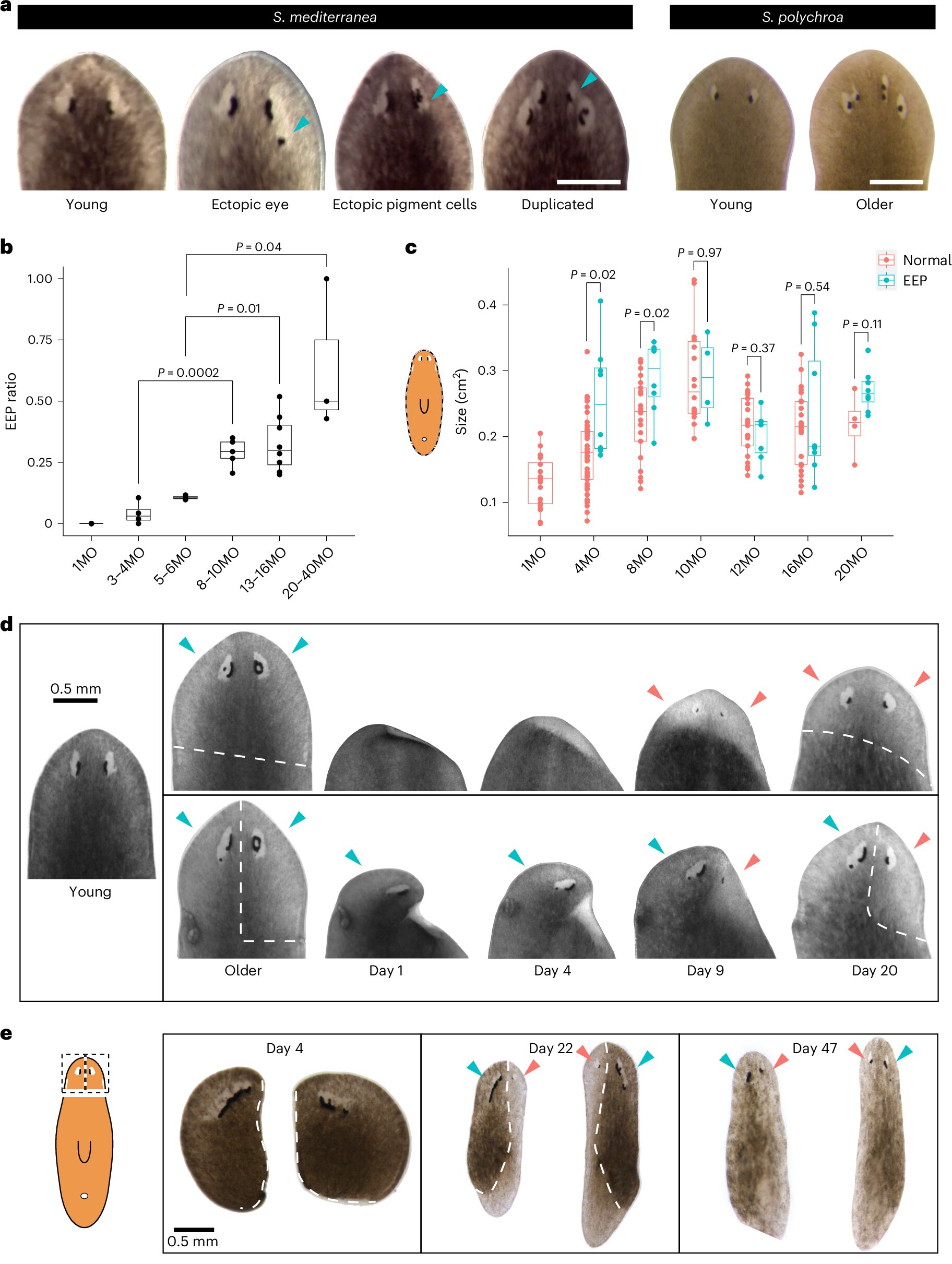Planarians, these immortal beings that rejuvenate while we age 🔄
Follow us on Google News (click on ☆)
Planarians, flatworms capable of regeneration, offer unique insights. These creatures can rebuild entire parts of their bodies, including their heads.

Aging and rejuvenation in planarian eyes.
Credit: Nature Aging (2025).
DOI: 10.1038/s43587-025-00847-9
The team led by Longhua Guo at the University of Michigan is studying these worms to understand their apparent immortality. Sexual planarians show signs of aging similar to mammals, but their regeneration reverses these effects. This includes restoring fertility and physiological performance.
Research published in Nature Aging shows that aged planarians retain their adult stem cells. Their regeneration erases age-related transcriptional changes. This discovery opens new perspectives on longevity and healing in other species.
A comparison with data from mice and humans reveals similarities in aging signatures. Planarians even share traits with mice that have undergone life-extending interventions. These results suggest that age-related decline could be reversible at the whole-organism level.
The team now aims to identify the genes and cells responsible for this regeneration. Understanding these mechanisms could inform therapies for humans. Although distant from us, planarians may hold keys to counteracting aging.
How do planarians regenerate their tissues?
Planarians possess stem cells called neoblasts, capable of differentiating into any cell type. These cells are the foundation of their ability to regenerate entire body parts, including organs like eyes.
Unlike mammals, planarians do not appear to lose their neoblasts with age. This preservation enables effective regeneration even in older individuals, providing a unique model for studying longevity.
Regeneration in planarians also involves reprogramming existing cells. This process erases aging marks at the transcriptional level, restoring tissues to a younger state.
These mechanisms could inspire therapeutic approaches in humans, particularly for degenerative diseases. However, translating these findings still requires extensive research.